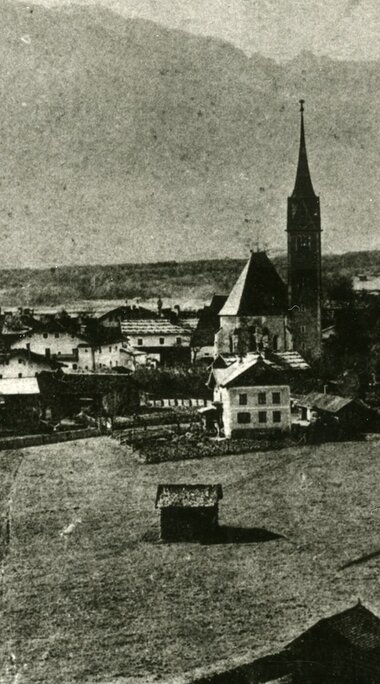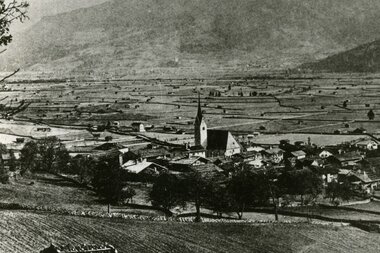Short story form Piesendorf
THE MINERS' SETTLEMENT AT NAGLKÖPFL
1200-500 BC: Miners' settlement at Naglköpfl (Illyrians from the Balkans)
400 BC: Settlement of the Celts - tribe of the Tauriscans, Ambisonts and Wangions
14 BC: Invasion of the kingdom of Noricum by the Romans. Lived peacefully with the Celts in Walchen (Walchen or Walsche = foreigner) for 500 years.
600 AD: Entry of the Bavarians - Bavarian sovereignty until 1228
745 AD: Beginning of Christianisation
8th - 13th century: "Lords of Pinzgowe" - The Pinzgau dynasty probably resided on Hochbürgl. The Mitterwirt inn, originally called "Wisinthof", dates back to the 7th century.
PUOSENDORF
1147: Puosendorf - first documentary mention of Piesendorf
1160: Construction of the first Walchen Castle - ancestral of the "Lords of Walchen". Today only the remains of the walls remain.
1228: Pinzgau becomes part of Salzburg - birth of the present province of Salzburg.
1270-1284: Prince Achbishop Friedrich ll of Walchen (the only archbishop from Salzburg) supports King Rudolf of Habsburg, helping the Habsburgs to rule Austria for 650 years.
IN THE KLUCKEN MINE
1510: Sulphur and copper pyrites are mined in the "Klucken Mine" (until 1853)
1526: Rebellious peasants destroyed Walcher Castle - it was never rebuilt.
1608: Construction of the present Walcher Church
1678: Capuchin Father Jud breaks a lance against the burning of witches, especially children.
1716: Construction of the present Aufhausner Church
1721: Start of continuous schooling (parish school).
1732-1743: Expulsion of the Protestants (16 Piesendorfers had to leave their home).
THE END OF SPIRITUAL RULE
1803: End of ecclesiastical rule - the prince archbishop was no longer a secular but a Christian ruler.
1803-1805: Salzburg is secularised and becomes an electorate of the Lords of Tuscany.
1810-1816: Salzburg was ceded to the Kingdom of Bavaria in the Peace of Schönbrunn.
1816: The province of Salzburg finally becomes part of Austria and was administered by Linz until 1848.
1848: Revolution - Abolition of serfdom of the peasants to the landlords.
1850: Construction of the Pinzgau imperial road
BUILDING THE CHINESE TOWN BY SEBASTIAN PERFELLER
1866-1883: Construction of the Chinese town by Sebastian Perfeller in Fürth.
1869: Installation of the first imperial and royal post office.
1870: 190 residential houses, 150 farmhouses, 27 feudal houses
1871: Introduction of the postal horse-drawn carriage (called omnibus) from Zell am See to Mittersill.
1880/81: Construction of the first school building
1890: Trades: 7 innkeepers, 6 grocers, 2 bakers, 2 tailors, 4 cobbler, 2 building joiner, 1 weaver, 2 cartwright, 3 blacksmith, 2 sawmill, 1 saddler, 6 miller, 1 watchmaker, 1 dealer in skins, 3 binder and 1 mill builder. This situation did not change significantly until 1952.
1898: Construction of the Pinzgau Lokalbahn train from Zell am See to Krimml.
FROM 1914
1914: The first water mains with elevated reservoirs are built.
1919: First telephone service
1920: Construction of the first electrical plant by Altjuden farmer Hans Huber
1924: Introduction of radio service
1929: The fire brigade acquires its first 18 hp motorised fire engine.
1955: Beginning of the development of tourism as the most improtant economic sector.










